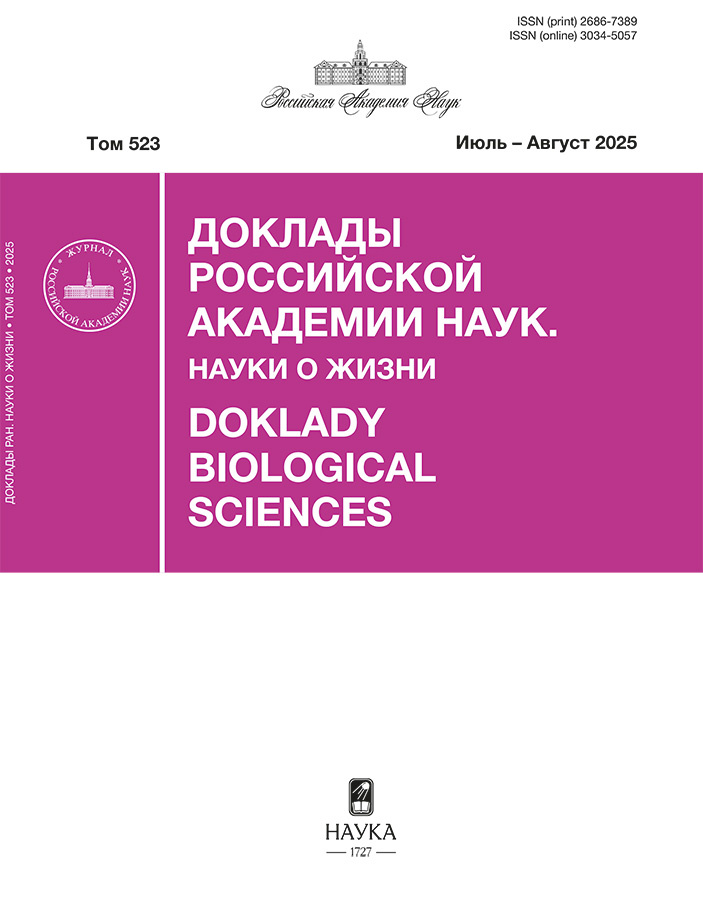модульные нанотранспортеры, способные связываться в клетках-мишенях С нуклеокапсиднЫМ белкОМ вируса sars-cov-2
- Авторы: Храмцов Ю.В.1, Уласов А.В.1, Лупанова Т.Н.1, Георгиев Г.П.1, Соболев А.С.1,2
-
Учреждения:
- Институт биологии гена Российской академии наук
- Московский государственный университет имени М.В. Ломоносова
- Выпуск: Том 510, № 1 (2023)
- Страницы: 259-262
- Раздел: Статьи
- URL: https://journals.rcsi.science/2686-7389/article/view/135693
- DOI: https://doi.org/10.31857/S2686738923700191
- EDN: https://elibrary.ru/QHSOXH
- ID: 135693
Цитировать
Полный текст
Аннотация
На основании литературных данных была выбрана антителоподобная молекула, монободи, способная с высоким сродством (константа диссоциации 6.7 нМ) взаимодействовать с нуклеокапсидным белком (N-белком) вируса SARS-CoV-2. Для доставки различных молекул в выбранный компартмент клеток-мишеней нами ранее были разработаны модульные нанотранспортеры (МНТ). В данной работе методами генной инженерии в состав МНТ было включено монободи к N-белку вируса SARS-CoV-2. В данный МНТ также был введен сайт отщепления монободи от МНТ в эндосомах. Методом термофореза было показано, что отщепление данного монободи от МНТ эндосомной протеазой катепсином В приводит к увеличению сродства монободи к N-белку в 12 раз. Клеточным анализом теплового сдвига была показана способность полученного МНТ взаимодействовать с N-белком в клетках A431, трансфицированных N-белком вируса SARS-CoV-2, слитым с флуоресцентным белком mRuby3.
Об авторах
Ю. В. Храмцов
Институт биологии гена Российской академии наук
Email: alsobolev@yandex.ru
Россия, Москва
А. В. Уласов
Институт биологии гена Российской академии наук
Email: alsobolev@yandex.ru
Россия, Москва
Т. Н. Лупанова
Институт биологии гена Российской академии наук
Email: alsobolev@yandex.ru
Россия, Москва
Г. П. Георгиев
Институт биологии гена Российской академии наук
Email: alsobolev@yandex.ru
Россия, Москва
А. С. Соболев
Институт биологии гена Российской академии наук; Московский государственный университетимени М.В. Ломоносова
Автор, ответственный за переписку.
Email: alsobolev@yandex.ru
Россия, Москва; Россия, Москва
Список литературы
- Clercq E.D., Li G. // Clin Microbiol Rev. 2016. V. 29. P. 695–747. https://doi.org/10.1128/CMR.00102-15
- Gebauer M., Skerra A. // Annu Rev Pharmacol Toxicol. 2020. V. 60. P. 391–415.
- Surjit M., Lal S.K. // Infect Genet Evol. 2008. V. 8. P. 397–405.
- Wu C., Zheng M. // Preprints. 2020. 2020020247.
- Prajapat M., Sarma P., Shekhar N., et al. // Indian J Pharmacol. 2020. V. 52. P. 56.
- Du Y., Zhang T., Meng X., et al. // Preprints. 2020.
- Sobolev A.S. // Front Pharmacol. 2018. V. 9, 952.
- Khramtsov Y.V., Vlasova A.D., Vlasov A.V., et al. // Acta Cryst. 2020. V. D76. P. 1270–1279.
- Slastnikova T.A., Rosenkranz A.A., Khramtsov Y.V., et al. // Drug Des Devel Ther. 2017. V. 11. P. 1315–1334.
- Li G., Li W., Fang X., et al. // Protein Expr Purif. 2021. V. 186.
- Kern H.B., Srinivasan S., Convertine A.J., et al. // Mol Pharmaceutics. 2017. V. 14 (5). P. 1450–1459.
- Khramtsov Y.V., Ulasov A.V., Lupanova T.N. et al. // Dokl Biochem Biophys. 2022. V. 506. P. 220–222.
- Molina D.M., Jafari R., Ignatushchenko M., et al. // Science. 2013. V. 341. P. 84–87.
- Liao H.-I., Olson C.A., Hwang S., et al. // J Biol Chem. 2009. V. 284. P. 17512–17520.













